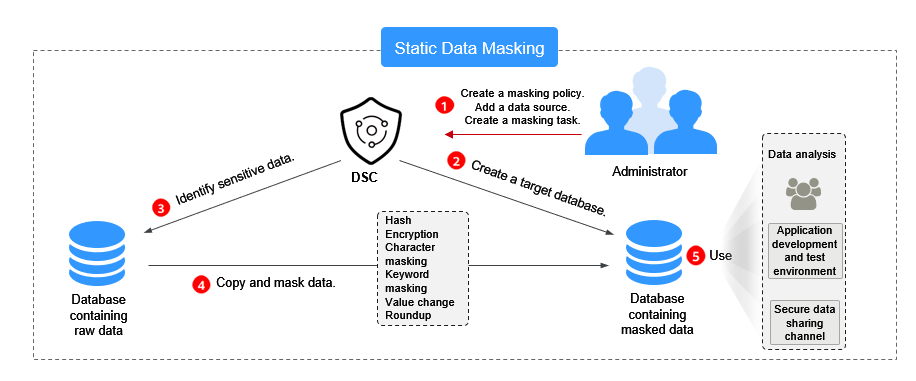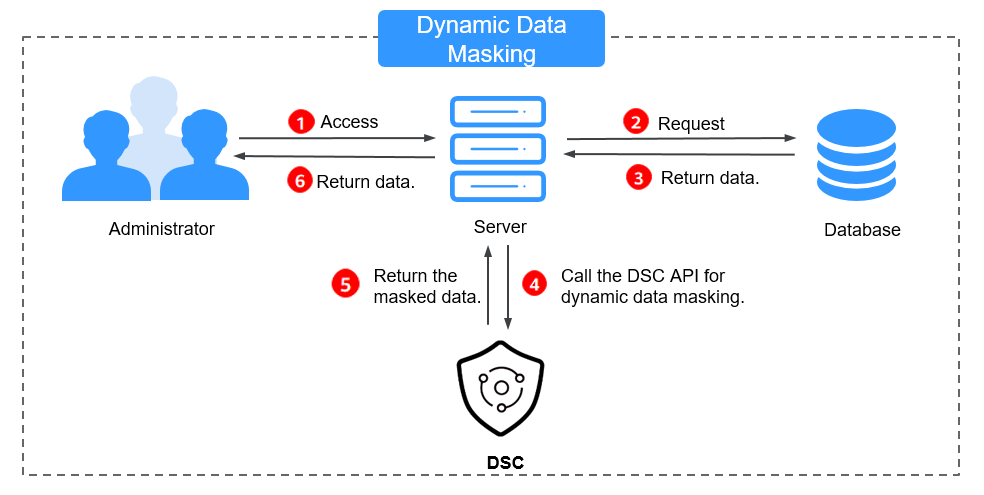Data Masking Overview
DSC supports static data masking and dynamic data masking. You can configure masking rules for specified data assets to implement static masking or use APIs for data masking to implement dynamic data masking, ensuring that sensitive information is not disclosed. Masking Algorithms and Application Scenarios lists the data masking algorithms supported by DSC.
Static data masking: DSC can help mask a large amount of data at one time based on the configured data masking rules. Static data masking is used when sensitive data in the production environment is delivered to the development, testing, or external environment for development and testing and data sharing and research. You can create a data masking task on the DSC console to quickly mask sensitive data in database, OBS, and big data assets.
API-based masking: Data accessed by external systems can be masked in real time. This masking type applies to scenarios where data is queried from the external system, such as production applications, data exchange, O&M applications, and marketing. For details, see APIs for data masking.
Procedure


Data Sources Supported by Data Masking
|
Masking Type |
Data Source Type |
|---|---|
|
Data masking |
SQLServer, MySQL, TDSQL, PostgreSQL, KingBase, DMDBMS, GaussDB, Oracle, and DWS |
|
Elasticsearch masking |
Elasticsearch |
|
Hive masking |
Hive |
|
HBase masking |
HBase |
|
DLI masking |
DLI |
|
MRS masking |
MRS_HIVE |
|
OBS masking |
OBS bucket files (text and images, including facial images and license plates) |
Feedback
Was this page helpful?
Provide feedbackThank you very much for your feedback. We will continue working to improve the documentation.See the reply and handling status in My Cloud VOC.
For any further questions, feel free to contact us through the chatbot.
Chatbot





